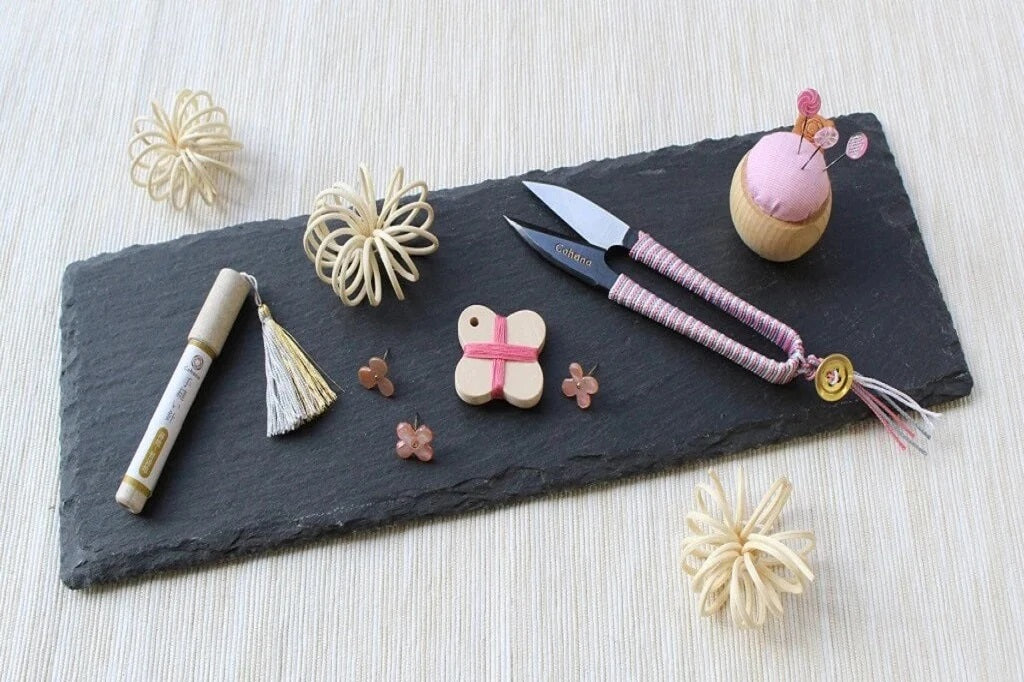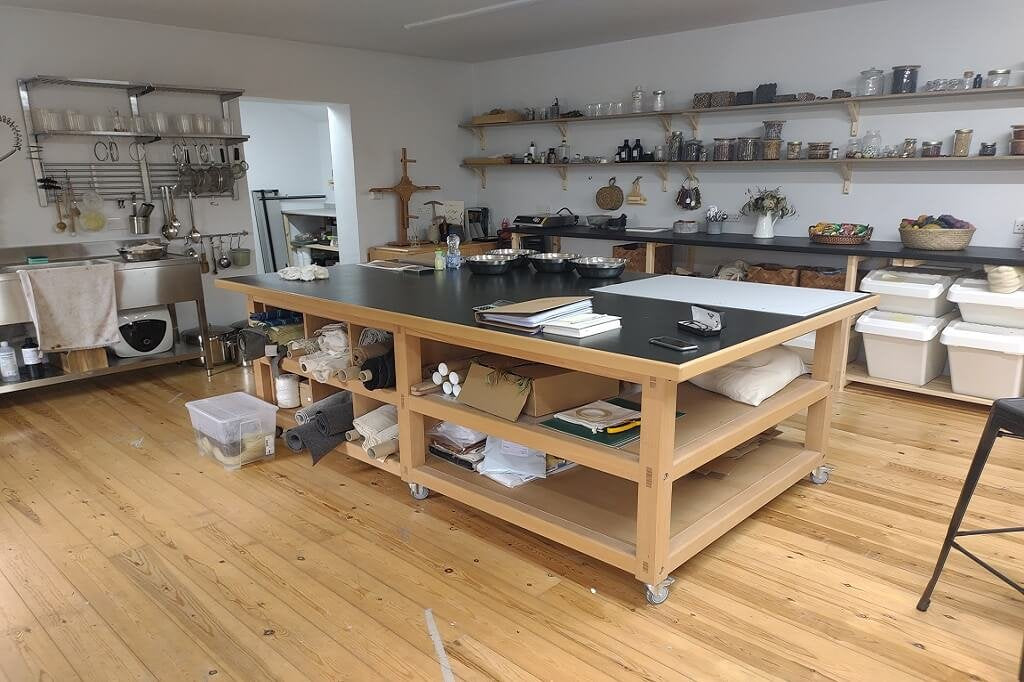Yarn Shop
Welsh Blankets
Clearance Sale
Craft Courses
Natural Inks - History and Definition
What is a Natural Ink?
Natural inks are coloured liquids derived from organic sources such as plants, minerals, and animals. Unlike synthetic inks, which are produced through chemical processes and contain artificial substances, natural inks are made entirely using naturally occurring materials. Natural inks are handmade products - they can be repeatedly made with the same recipe but they will never be exactly the same, part of the beauty of a handmade product!
What are Natural Inks Made from
Natural inks are made from a variety of sources, primarily but not exclusively plant materials, that can be found in nature. To make natural inks, you need the following basic materials for your recipe:
- Colourants: The primary component, extracted from natural sources.
- Plants: Berries flowers, leaves, roots, and wood can all be used to create natural inks. Indigo (blue), saffron (yellow), beetroot (red), and oak galls (black).
- Minerals: Ochres (various earthy colours), cinnabar (red), and malachite (green). Iron oxide (rust) can be used to create a brown ink, while lapis lazuli can be used to create a blue ink.
- Animals: Sepia from cuttlefish, carmine from cochineal insects. Crushed insects, such as cochineal beetles, can be used to create red inks. Cuttlefish ink, which is a black liquid produced by cuttlefish as a defense mechanism, can also be used as an ink.
- Binder: In addition to the colouring agent, a binder is also needed to help the ink adhere to the paper.
- Solvents: Liquids that dissolve the colorant and binder, allowing the ink to flow smoothly. This is the liquid that carries the colour, for example, water or an organic solvent.
FelinFach Natural Inks
All of our inks are handmade in small batches using natural dye and tradional methods. All our inks are available in different sized bottles with screw top lids and a pipettes, for use with dip pens and brushes.
History of Natural Inks
These inks have been used as a means of communication for thousands of years - for writing, drawing, and printing. In todays world, natural inks are being appreciated for their for their environmental benefits and unique aesthetic qualities.
Ancient Civilisations
Natural inks have a rich and long history dating back to ancient civilisations.
- Egyptians (circa 3000 BCE): Used carbon black ink made from soot and gum. Hieroglyphics and documents were inscribed using reed pens and brushes.
- Chinese (circa 2500 BCE): Developed ink sticks made from soot and animal glue. These inks were used in calligraphy and painting.
- Greeks and Romans (circa 500 BCE to 400 CE): Utilised iron gall ink, derived from oak galls and iron salts. This ink was popular for its deep, permanent black colour.
- In the UK, there's evidence of the use of natural inks as far back as Roman times.
Medieval Period
During the medieval period, ink production and use became more sophisticated.
- Circa 500-1500 CE: Monks and scribes in Europe used iron gall ink for illuminated manuscripts. The ink's permanence made it ideal for important texts.
- Circa 700-1200 CE: Scholars and artists used a variety of natural inks for scientific manuscripts and intricate calligraphy.
Renaissance to Early Modern Period
- Renaissance (circa 1400-1600 CE): Artists and scholars experimented with different natural dyes and pigments, leading to advances in colour range and ink stability.
- Colonial America (1600-1800 CE): Homemade inks from local plants and minerals were common, as commercial ink production was limited.
- In the UK, the search for a good quality black ink led to the rise of "India ink". This was essentially a rebranding of Chinese ink sticks, made from lampblack (soot) and a binder.
Modern Use and Revival
In the contemporary era, there has been a resurgence of interest in natural inks due to environmental concerns and a desire for sustainable practices. Artisans and hobbyists appreciate natural inks for their unique qualities and historical significance.

Benefits of Natural Inks
Natural inks offer several advantages as compared to synthetic inks. Here are some of the key benefits:
- Handmade product: Your natural inks will be one of a kind. Never exactly repeatable which ever recipe you follow, part of the beauty of hanmade products.
- Environmental Impact: Natural inks are an eco-friendly sustainable product, biodegradable and non-toxic.
- Unique Colours from Nature: Colours and textures that are difficult to repeat that synthetic inks often cannot replicate.
- Historical Authenticity: Ideal for historical re-enactments, restoration projects, and traditional art forms.
For all the benefits of natural inks, there are some 'downsides' as compared to the making of synthetic inks. Generally, they can be less stable than synthetic ones, leading to fading over time and the making natural inks is time-consuming compared to purchasing ready-made synthetic inks.
Conclusion
Natural inks represent a fascinating blend of history, art, and sustainability. Their use spans millennia, highlighting the ingenuity and resourcefulness of past civilisations. Today, they continue to inspire artists, calligraphers, and eco-conscious individuals seeking to reconnect with traditional practices and reduce their environmental impact
About FelinFach
Located in Pembrokeshire Wales, our ethos is defined in the three words...
NATURAL TRADITIONAL HANDMADE.
- Hand woven iconic Welsh blankets.
- Hand dyed yarn, dyed with natural dyes only.
-
Handmade candles, candle accessories and Candle Making Workshops.
- Natural Dyeing Craft courses.
- Yarn shop, yarn bowls, project bags, tools and accessories for knitters and crafters.
- Welsh Gifts, souvenirs, made in Wales, handmade in Wales.
We are a proud supporter of Americymru, the Campaign for Wool, Global Welsh and Red Dragon America.
Last updated 9th June 2024























